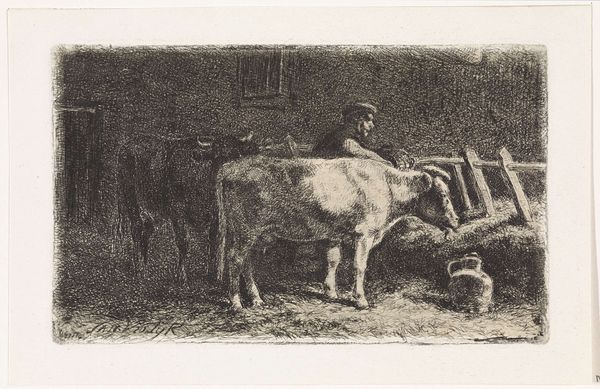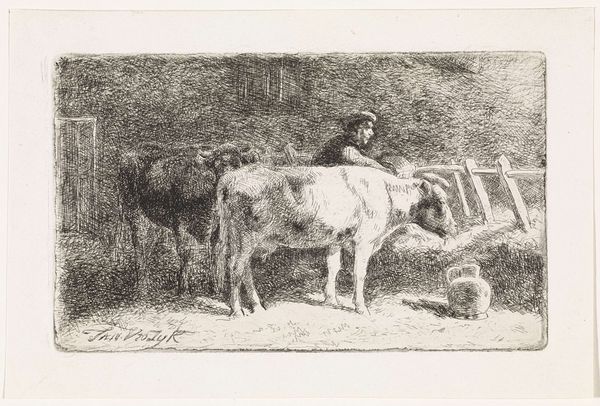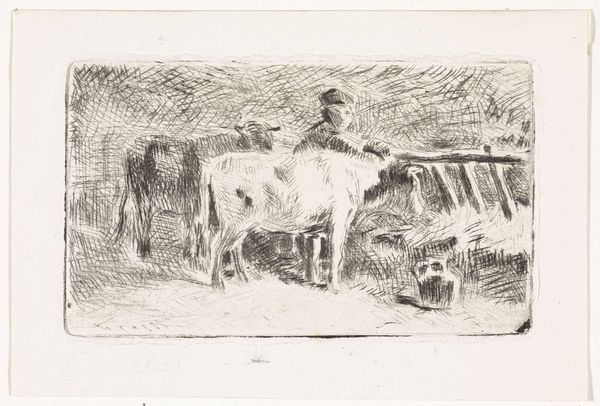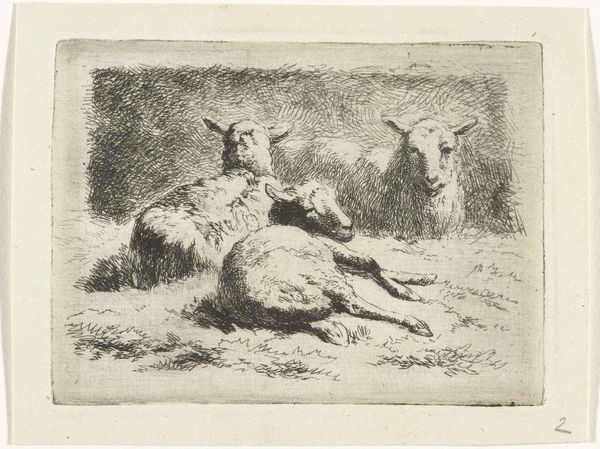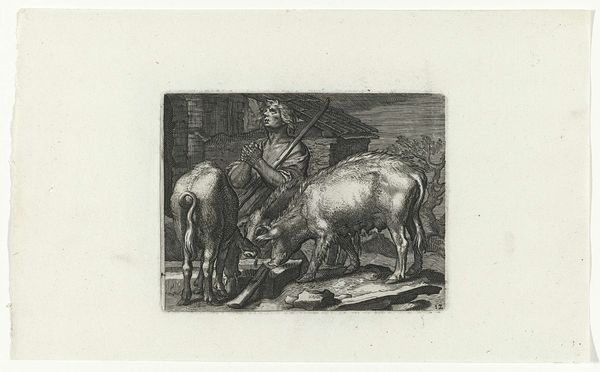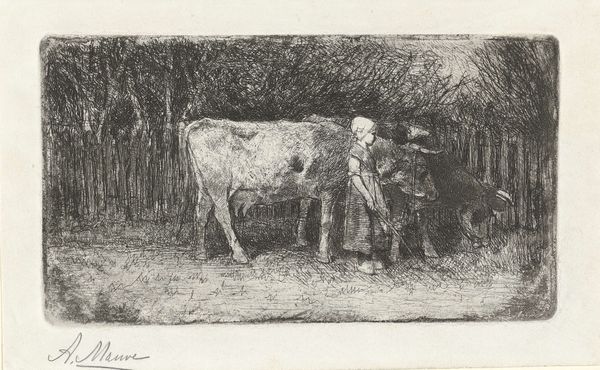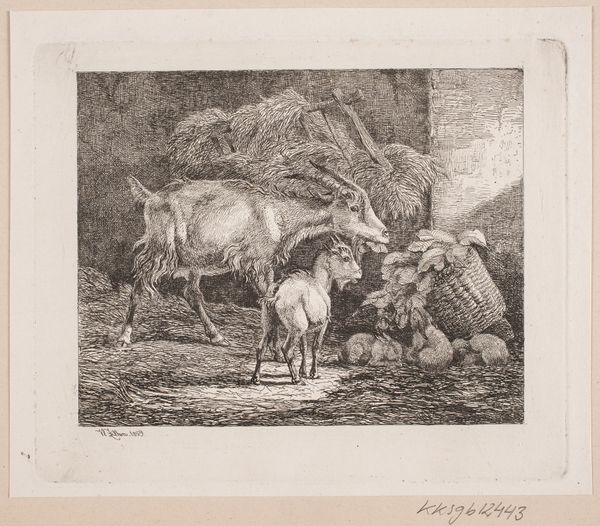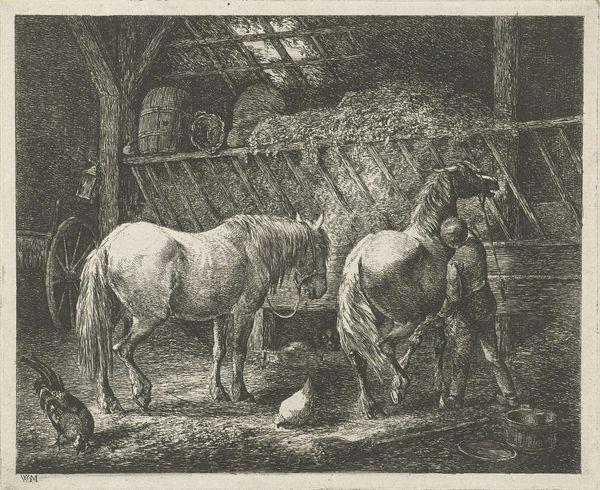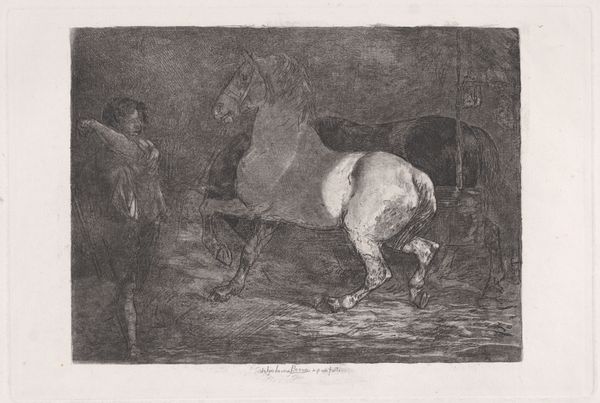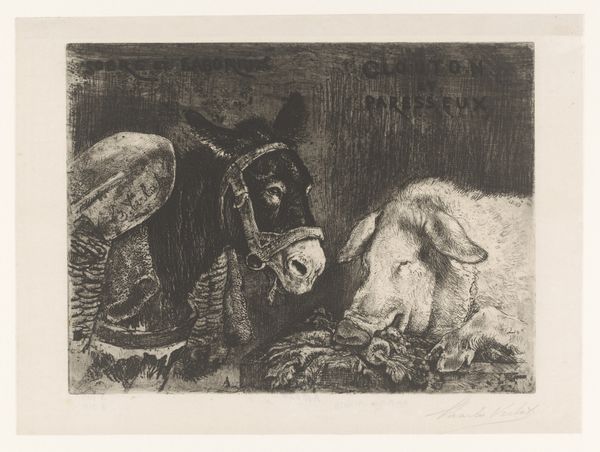
Boer tussen twee koeien bij een ruif in een stal (kleine variant) 1860 - 1894
0:00
0:00
janvrolijk
Rijksmuseum
drawing, etching
#
pencil drawn
#
drawing
#
amateur sketch
#
light pencil work
#
etching
#
pencil sketch
#
incomplete sketchy
#
landscape
#
pencil drawing
#
ink drawing experimentation
#
pen-ink sketch
#
sketchbook drawing
#
pencil work
#
genre-painting
#
realism
Dimensions: height 50 mm, width 85 mm
Copyright: Rijks Museum: Open Domain
Editor: This etching, titled "Boer tussen twee koeien bij een ruif in een stal (kleine variant)", roughly translates to "Farmer between two cows at a feeding rack in a stable". It's attributed to Jan Vrolijk and believed to be created between 1860 and 1894. It's a very busy composition, almost claustrophobic. What do you see in this piece? Curator: I see a window into the rural experience, a lived reality often romanticized yet grounded in labor and a specific relationship with the land. Consider how the image is composed; the farmer is positioned *between* the cows, suggesting perhaps an intertwined identity, his existence dependent on theirs, and vice-versa. It’s a commentary on human-animal relationships, especially pertinent when considering the industrialization of farming in the 19th century. Do you think Vrolijk might be subtly commenting on the changing agricultural landscape? Editor: Possibly. It feels less like a celebration of idyllic farm life and more like just... daily life, presented without embellishment. The limited use of light and shadow gives it an unpolished quality, as if the artist aimed to depict the scene with raw authenticity. Curator: Exactly. This rawness allows us to think about whose stories were deemed worthy of artistic representation. Peasant life was gaining traction as subject matter during this time. Courbet, Millet, and others challenged the art world, shifting away from academic paintings depicting the aristocracy. By depicting ordinary people and scenes, how does this change the narrative, the very *act* of observing and recording? What power dynamics are at play? Editor: That's fascinating. So, the simple act of choosing this subject matter, a farmer and his cows, is making a statement in itself? Curator: Precisely! It challenges existing social hierarchies and gives visibility to the working class, and encourages empathy. But who is the artwork ultimately serving, who is the intended audience, and why does that matter? Editor: I hadn't considered the social implications so deeply. Now I see it as a depiction of not just cows and a farmer, but a statement about labor and identity in a changing world. Curator: Precisely! Art helps us interpret history and allows us to see ourselves, others, and the structures that affect society.
Comments
No comments
Be the first to comment and join the conversation on the ultimate creative platform.
